Set-up and maintenance
Do it yourself
- Action
- Curing a buzz
- String rattle
- Intonation
- Resonances
- Balancing piezo and magnetic (Acoustibass and semiacustica)
- Scratches on fretless (acoustibass)
- Tuning stability and accurancy
Action
1°step: Bridge
Raise the bridge string height untill the notes play OK also in upper range (around 12° fret). The more you raise them the more they can vibrate clearly.
To raise bridges , depending on kind of bridges , you can raise the individual saddles or the whole vibrato bridge.
On basic model piezo basses with tilt neck you can adjust the neck-body angle. On semiacustica Or Acustivibe SWD or old Acoustibass you must operate on the saddle. There are shims to be placed or taken off to adjust the height. This bridge should be disassembled after the strings are loosened. Unscrew the two side screws and then gently start to disassemble the bridge. Please note how the pieces are put toghether and where the piezo has to be placed to work correctly. Then reassemble it with the proper measures, placing the piezo carefully in it’s original position. This operation should be done by an experienced repairman, or who can handle the job.
One Acoustibass or Acustivibe with individual saddles you can add or remove shim disks to change the height of the saddle.
Maybe you can also consider if he need heavier string gauge.
2°step: Neck
Embracing the instrument, as if you are playing it, press the E bass string at 1st fret with left hand and last fret with right hand and check the distance between the string and the 9°th fret : the string is a straightedge so you can check the neck curvature:
distance between fret and string can go from zero (flat) to as much as you don’t hear a buzz. ,012 is the distance for SRV and ,006 is for Jeff Beck, just to have an idea.
Play the 3-5-7 fret range and adjust the neck’s truss rod to lower the action of string.
Tighten (clockwise) the screw reaching the position just before they start to buzz. This is the way to get the minimum action on the instrument.
 clockwise to lower strings action |
 counteclockwise to raise the strings action |

high action, for heavy, strong playing
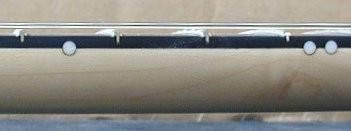
Low action for light playing
The neck should normally be slightly bended as if you observe the pattern of a vibrating string it is a kind of an ellipse. It mean that to let it vibrate freely without touching the frets , the neck should follows this curve of the ellipse. The more you go up on the neck the more this ellipse became small as strings get shorter, so means that the curve of the neck should be more pronounced towards the nut and can go flatten towards the body. This normally happen as the neck reduce it’s dimension in thickness and side measure going towards the nut letting it bends more where is thinner. So you can also understand why thinner strings or loosed detuned strings need for higher action.
Our truss rods are 2 way, means that you can let them work in both ways. Between the two actions there is a loosen position you can detect. Is important to know this as you can check neck condition: without strings and with the truss rod in this loosen position the neck shoud be essentially straight as it was when we built it. Our neck is engeeneered to allow just a minimal bend due to strings pull , so just a minimal work is asked to the trussrod.
3°step: Nut
Individual string slots should be adjusted properly. This should be made by experienced luthiers.
If the height is not well setted you can experience hard action and inaccurate tuning in the first frets, or buzzing
4°step : Intonation at Bridge
Saddles should be compensated comparing the harmonic at 12° and the frettet note at same fret. If fretted note is sharp the saddle should be regulated to let the string become longer. If it is flat the string need to be shorter.
Curing a buzz
Before anything: change the strings ! just with on new string you can judge a problem. Old string can give you very strange problems. you can work hours before discover that the string was not sounding correctly.
String rattle:
On a fretless: The possibility is that the freboard was worn (so you need to restraight it out), or the neck do not has a proper relif.
On a fretted: a (or some) frets are worn, needs to be re straighted, or the neck do nt has a proper relif.
Intonation:
From our customer: “I had the impression that the guitar is a little false after tuning her with a digital tuner. For example :when I play jazz with 4th,7+,11-,13-,7# -5 chords wich I am taking them from the third and ninth fret everything is allright.But when I was starting to play lets say CLAPTON,…BANGLES (close your eyes) the RE(d) major between the second fret and the third—was false…I went home and took the tuner and hit every note from the “si”(B) string and begining from Do(1st) untill the fourth fret was false(up tuned)but the notes were getting better untill the fifth .the fifth fret-corect…so I went to the octavas.the octava was correct also then I changed the string with a thiner one—WORSE!!!!”
The answer is because the frets are hi jumbo and you have to get used to it. Maybe you are used to have lower frets and press strings without taking care to each finger pressure. On our Semiacustica in particoular, the bridge saddle is not compensated, like standard folk instruments. If you want to have a more accurate tuning on octaves you shoud take to a liuther and do a similar job you would do on a acoustic, doing singolar adjustment for each string. You can check if the nut slots are correct: press strings at third fret and see distance between fist fret and string, it should be minimum, without touching. G is very sensible to tuning especially with hi frets and light strings. Try playing with different finger pressure and check if yor pressure is correct on each string the confirmation should be in tune chords. The pressure should be light as the extra pressure will raise the pitch . If the problem is the hi frets and you don’t get used to it, it’s enought to lower the frets taking them to a lower height. When you play a jazz chord, with some half-barrè or many notes, the pressure is more controlled. On the opposite, when you do two note solo or chord at first position is more triky as is very easy to give more unbalanced pressure. Our frets are cutted at position with centesimal precision (measures has 3rd number after zero= 23,456) so the frets are in the right places!!
Resonances
Resonance can happen is several way:
- Resonance of the truss rods: on old truss rods there was some space inside so can happen (especially is the trussrod is loose) that a vibration occurred. It is possible to warm the neck and fill the space injecting wax inside the truss rods. Since 2003 trussrods have a plastic wrap so this cannot occurr.
- Resonance at nut: on old brass adjustable nuts, nut screws used to cause vibrations. We upgrade those installing a resin standard nut.
- Resonance after the nut: the strings after the nut vibrate . Check if the tuners are well closed and wrap the strings a little bit more to increase the angle at the nut. Avoid to do or leave just one turn around the post of the tuner.We like to have some turns(On the bass: 2 for B’s – 5 for G’s) so the string get low enough. You can avoid that also putting some gum or textile to dump that string along the headstock.
- Acoustibass or Basic piezo Bass: Resonation of strings between the bridge and body: this happen usually mostly to D and A. Try to touch or mute the strings between the bridge and where they go into the body of the bass. If a vibration is muted in that way you need to put something to mute those piece of strings. The new bridge with single saddles , reduced this problem, and we eliminate it in 2005 putting a thin layer of neoprene or elastic material between the bridge and the resin piece below it .
- Acoustibass or Basic piezo Bass: Resonation of the bridge : It was due to the different pressure along the single bridge saddle due to the slight bending of the spruce top . That caused that the main pressure is concentrated on sides (this happen also when the side screws are overtighted) and create some space at the centre , between body and the resin underbridge piece. The new bridge with single saddles reduced this problem. It is possible to slightly shape the bottom of the resin underbridge to follow the curvature of the surface.
- Resonance of end pins: the strap holders sometimes are loose so they vibrate.
- Resonance from a pickup: a pickup or it’s holder can rattle. Even pickup springs can rattle or give a sort of reverb. Check trying to dump them.
- With a fretless: Sometimes playing on upper frets the portion of the string between the capo and your finger will vibrate creating a disturbing frequency or a kind of buzz. To avoid it is necessary to possibly dump the string behing the playing note or try to raise the action bending the neck a little bit more, cechink that the strings height at capo is correct and lot too low.
Balancing the piezo and magnetic volume
The Acoustibass is equipped with a pan control, which is used to adjust the balance between the magnetic pickup and the piezo element. Usually we adjust the pickups to have similar output (in the middle) when playing through a PA. But there are many variables so the best way to adjust the balance between magnetic and a piezo is to lower the magnetic (maybe someone have raised it after our preset) until the sound is ok. The power you feel from the piezo (that is preset by its preamp to a single coil sound level) varies depending upon the following:
- Whether you usually use it with the tone pot open or closed
- The way you play….if you play hard the piezo tone will be much more prounounced, if you have a light touch the piezo response will be much lower.
- How you amp it….With a strong midrange amp or cabinet, the magnetic pickup will sound more powerful and can overpower the piezo.
- The battery status.
The balance between the magnetic and piezo tones can be set by using the piezo level as a reference, then re-adjusting the magnetic pickup distance from the strings (adjusting the two side screws) to obtain the desired and appropriate magnetic sound level.
We have chosen to use a passive mixing circuit. An active circuit would preamp both the piezo and magnetic signals. This might result in a more consistent mix between the two pickups, but it would also add a compression and thereby modify the dynamics of the instrument. So, to preserve the original passive magnetic tone, we are using a passive balance that has a more limited mixing range. Removing the battery will not affect the magnetic pickup output, but the piezo will stop operating.
Scratches on fretless fretboard
With round wound strings it is easy to get scratches on resin fretboard. To limit it we suggest to keep the fingerboard lubricated or to use flat strings.
The material is very hard so, comparing to wood, it will take much more time to be worn needing to be reflatten.
If you wish to refresh a scratched fingerboard you need to work on it with a steel wool , if the scratches are light , or sand it with a medium sanding paper (220) to reflatten it. We use to put a very small quantity of silicone grease to lubricate it .
Tuning stability and accurancy
- Check the screws that hold the neck to the body: they must be well tightened. There should be no movement or creacking when you try tomove the neck sideways.
- State of the front studs pivot screws: they shouldn’t move in their inserts. If you have the type that has an internal screw, this should be screwed until it locks. You can put some teflon tape to the screws to let them be more firm. They should not be worned or rusty.
- Point of contact between studs and bridge: should be clean and sharp.
- The nut:-For traditional tremolo bridges: The strings should be free to slip through their nut slots that can eventually be lubricated. We use Graph-tech graphite nuts that assure the best performance. – for Floyd locking nuts: it should be locked in its position and it should not move. We use to glue it with epoxy. You can check if it is moving putting to finger on its sides while moving the bridge arm full way up and down.
- The springs: they should have an even action.
- The neck: it can be affected by the variation of string pull, so it can comeback to it’s original tension or action with a slight delay. This happen especially with very thin necks and with necks that are easy to bend.
The only vibrato which really well stays in tune, in my experience, is the Gotoh Floyd.
No others can do better.
Mostly, tuning stability depends on how much the player asks from the tremolo and how much the player “knows” it and “lets it work for him”, as it is the player who knows how much each string will detune (up or down) after a certain number of gigs, etc…
Also the Wilkinson non-locking tremolo is very good, but when you do not lock the nut, you always have some detuning….
If you listen to Hendrix you can hear what really happens with a tremolo. Also, on the recent Jeff Beck “Live at Ronnie Scott” you can hear that the guitar is not really in tune.
But part of Jeff’s great technique is about mastering the guitar tuning, living “illogically” and “imperfect” gives warmth and “real” feeling…
But it is not that the guitar itself and the tremolo stay in tune by themselves.
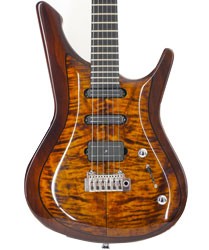
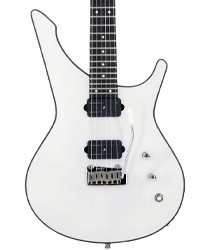
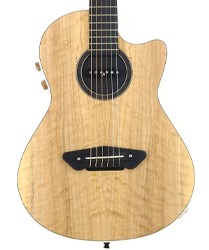
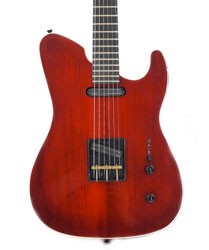
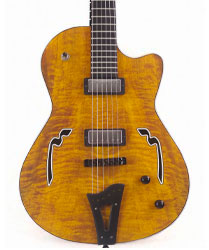

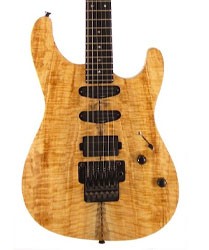

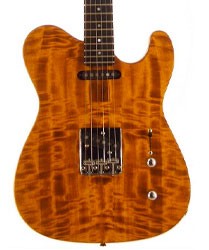
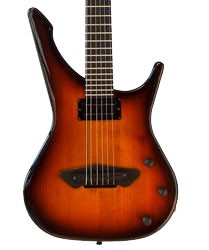


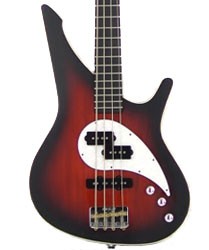
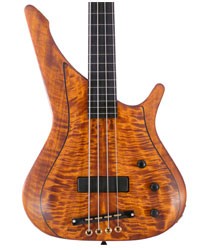

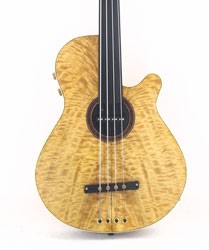
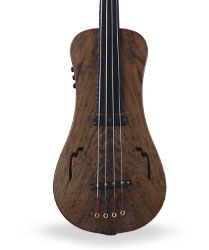

 Italiano
Italiano
